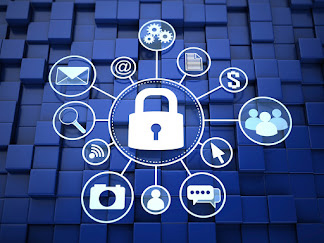ANTIVIRUS SOLUTION IS MOST IMPORTANT
"Is it really necessary to have an antivirus installed on my devices?" Giving an affirmative or negative answer to this question, which is often heard in different environments, from the most technical and specialist to end users without much knowledge of technology, never takes a short time. It usually generates long discussions about the performance of the team, the usability of the security solutions, the privacy of the user and a number of other topics that often extend the conversation. I already know that when working in a security company like ESET, you will be thinking that my answer is going to be strongly biased towards yes, which is totally true. However, as a security professional who has been working on these issues for several years, I have learned a lot about threats and their ways of spreading. Therefore, I am going to list seven facts that will help you form an idea about what to do.
1. Diversity of threats
Today there are many types of
threats that we find spreading and affecting users. Although the term
"antivirus" was coined in the collective subconscious, this type of
tools have evolved from detecting only computer viruses to becoming complete
security solutions, which provide many other functionalities such as firewall,
antispam and anti-phishing filters or scanning of memory, among others, that
provide comprehensive protection to the system and allow you to navigate safely
in the current context of threats.
Undoubtedly, the use of Social
Engineering is one of the main mechanisms used by attackers to spread their
threats and many times user interaction is needed to run a file, open a
document or download something on their mobile device. From there, the
infection begins.
However, it is not the only thing
that attackers use, as there are techniques that do not require a user to
interact with the threat in order for it to be installed. For example,
injecting an iframe into a vulnerable website can lead an attacker to install
something on the user's device without the user being aware of what is
happening. But a security solution will detect this malicious behavior.
3. Growth in the number of detections
A few years ago, when I started
working at ESET, we talked about that on average around 200,000 different
samples were processed every day; at the end of 2016 this number was close to
300,000. This without forgetting that, only from ESET, updates of several
thousand signatures for malware targeting Windows are released every few days.
If to the above we add the fact
that everything we see in ESET is not the only thing that can happen in the
cybercrime ecosystem, these numbers may be higher.
4. Vulnerable technologies accommodate different threats
Computer threats not only take
advantage of flaws and vulnerabilities in particular versions of an operating
system, but also in applications, which opens the possibility of an infection
regardless of the version of the operating system used. In addition, to the
above is added the variety of languages used by attackers, which extend their
possibilities of affecting systems: from compiled languages to scripting they are used
to attack various platforms.
5. Affected platforms
Without a doubt, most malicious
code is focused on affecting Windows operating systems, but it is becoming
increasingly common to find threats to other systems such as Mac OS X or Linux,
despite the fact that many continue to believe in their invulnerability. There
is even malware for mobile systems like Android or iOS, so it's time to
understand that there are no risk-free platforms.
6. Concentration of threats
It is a reality that a security
solution will not stop all the attacks that a user may be a victim of, but it
will serve to prevent infection in the vast majority of cases. Considering the
growth in the amount of malicious code circulating, it is important not to
leave protection to chance.
7. Use of the device
The use that is given to the
device is essential to prevent infection. When it is shared, the chances of
being a victim of a cybercriminal increase; For example, have you thought about
what your son, cousin, uncle or girlfriend can download when you lend him your
equipment so that he can be distracted for a while?
Beyond the discussion about who
you should or should not lend your phone to, someone who gains control for a
moment could execute something malicious by mistake or ignorance. And if we
talk about strangers, the possibility increases and includes the potential
intention to do harm.
It is true that having a total security
solution is not enough. Ensuring that we are going to be safe goes beyond just
having an antivirus installed: knowing the threats and how they spread, in
addition to making adequate use of technology, mainly keeping operating systems
and applications updated, help to have real protection against all kinds of
threats.
There are those who say that
having an ANTIVIRUS
SOFTWARE installed extends the possibility of an attacker to compromise a
system, because they could take advantage of the vulnerabilities of these
tools. And to a certain extent they are right: installing a new application on
the system extends the attack surface. But, in this particular case, there are
many more threats that it helps prevent than it could cause. Also, if we are
talking about a product backed by a reliable security company with a track
record in the market (that's right, I was also thinking about ESET) these
problems are solved very quickly, preventing an attacker from taking advantage.




Comments
Post a Comment